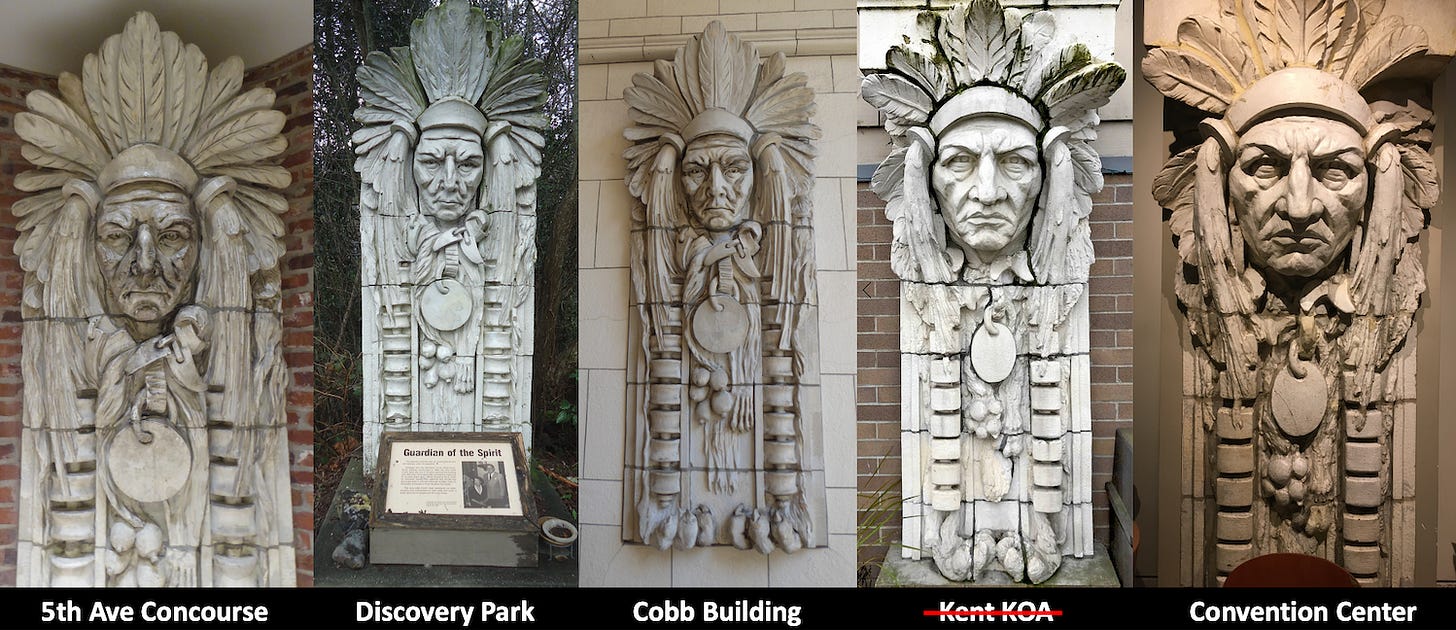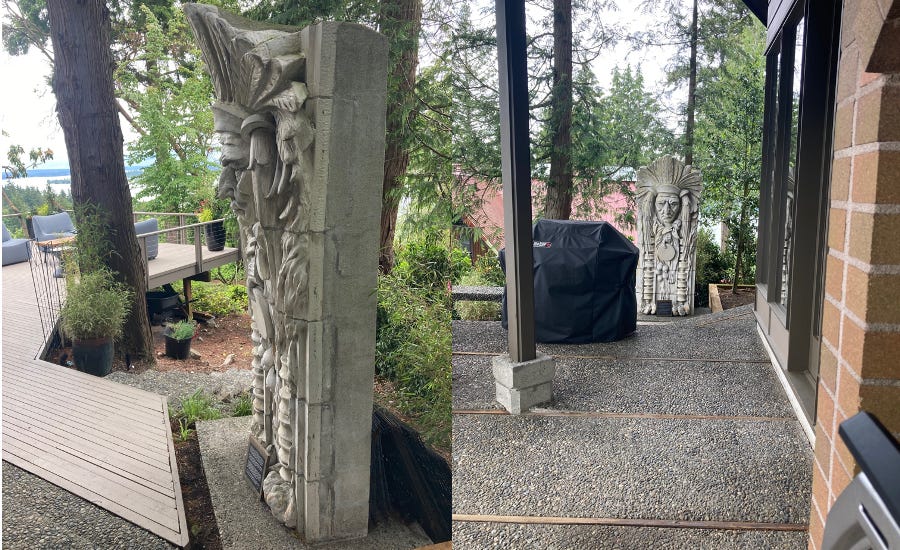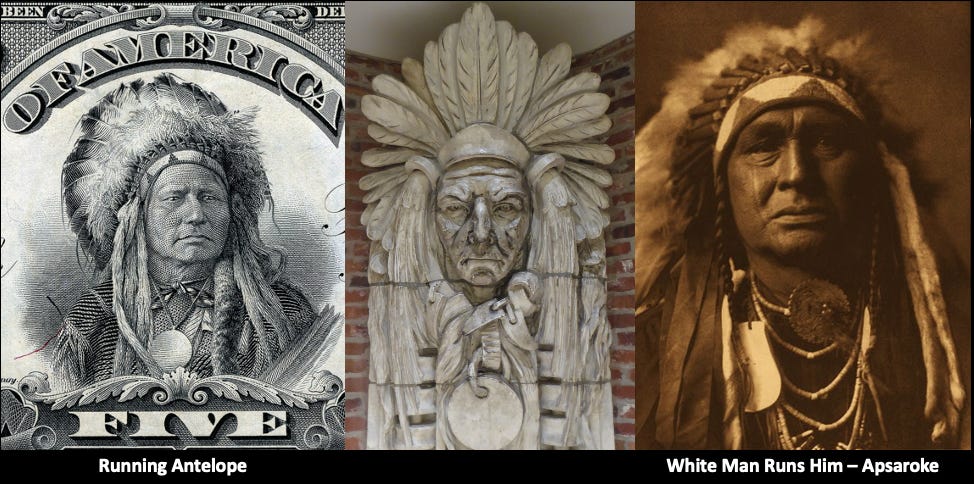For many years I have been on a quiet hunt for a series of famous Seattle sculptures: large, terra cotta figures formerly high atop a downtown building. This past weekend, I found one, deep in the wilds of Kirkland, at a house for sale. It stood outside off to the side of a deck, keeping eye on a barbecue. It is the seventh one I have found, though I have also lost track of one of them.
In 1975-1976, workers razed a landmark trio of buildings in downtown Seattle. The White (1908-1909), Henry (1910), and Stuart (1914-1915) buildings were built separately with matching exteriors that gave them the appearance of a single, unified structure. Looking down were 16 terra cotta figures of Native Americans. Chester White, who was responsible for his eponymous building, wanted to honor Seattle’s Native history and asked for the figures.
Unfortunately, the figures bear no resemblance to the Indigenous people of the region, who did not and do not wear headdresses adorned with feathers. Instead, the terra cotta men most closely resemble two images: Edward Curtis’s White Man Runs Him and Running Antelope from the 1899 $5 silver certificate. White was friends with Curtis, which lends more credence perhaps to the Curtis image.
When the buildings were leveled (to build Minoru Yamasaki’s iconic Rainier Tower, aka the Pencil), the figures were saved and sold for $2,000, which totaled $1,500 for removal and $500 for reassembly. Each weighed 800 pounds, was made of 18 pieces, and was held together with small wires. They were fashioned by Victor G. Schneider, who worked for the Renton Clay and Coal Company. He is also responsible for the large eagle on what is now the ACT playhouse, as well as a panel above the entrance to the old Seattle Times building (on Olive Way).
Newspaper accounts from 1975 reported that one figure was to go on the Cobb building, across the street from its original home (you can also see the same figures atop the Cobb, which closely resembles the White-Henry-Stuart design); one was purchased by a relative of Horace Henry (of the Henry Bldg.) and donated to the Museum of History and Industry; and one purchased by another Henry descendent, Janet Aurelia Henry Hoggson, and installed at her Highlands home. No information was available on who bought the other figures.
Here are the locations of the ones I know of: Kirkland, Discovery Park, MOHAI, Convention Center lobby, Cobb Building entry, and the underground concourse between Union Square and the Rainier Tower (the building that arose on the site of the White-Henry-Stuart block. There also used to be one at a KOA in Kent but that site sold and I was told that the figure ended up in a motorcycle shop but I haven’t been able to confirm that story.

If anyone has any additional information on the location of these figures please let me know. I like to think that more of them are out there, perhaps lurking in someone’s yard, like the one out in Kirkland.
Word of the Week - Kirkland - The eponymous name of the town, from Peter Kirk, managing director of the Moss Bay Iron and Steel Company of Workington, England. In 1888, he selected the future site of Kirkland for a steel plant he planned to open. Nearby were the raw ingredients he needed: iron and limestone (for smelting) near Snoqualmie Pass and coal from Newcastle. The hope was that Kirkland would become the “Pittsburgh of the West” and grow quickly from no residents to a town of 10,000. It didn’t.







The Seattle Indiann Services Commission acquired one of these sculptures in the 1980s, and may still have it at their 12th & Weller Pearl Warner building. You can contact them via info@seattleindianservices.org.
Judith Yarrow
https://share.icloud.com/photos/0c326M2nt8LljcYKmr4btS5iA